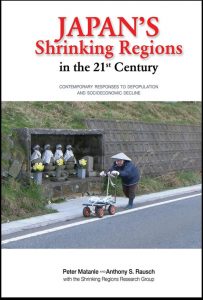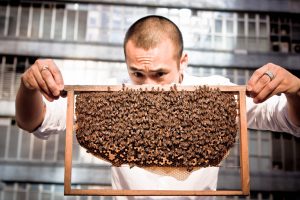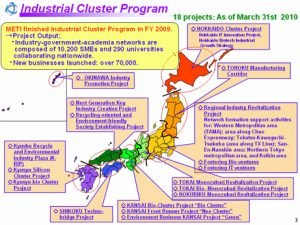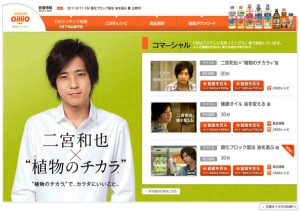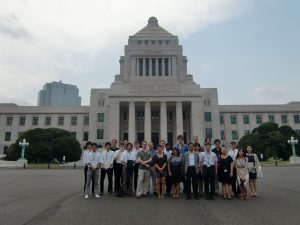Japan as Test Case for a New Age: The Importance of Understanding Local Places
Memo #240 By Anthony S. Rausch – asrausch [at] cc.hirosaki-u.ac.jp Japan faces an aging population and rural out-migration, a sluggish economy and drastic divisions between urban-rural economies, a critical techno-environmental catastrophe and vital debates regarding energy policy. A bleak set of problems, but also a fair representation of some of the issues the world is […]
Urban Beekeeping: a new buzz in Asian cities
We need bees, but bees are dying. This is a global problem, but some Asian cities are finding novel solutions in urban beekeeping.
The humble Apis Mellifera punches well above its tenth of a gram weight. Through transferring pollen, bees are essential to 80% of the food we consume. Furthermore, the economic input from bees is substantial, with pollinated crops accounting for $1 trillion of the yearly agricultural produce sold.
Unsettled Remains: Tensions over Unrepatriated Bodies from the Asia-Pacific War
The “remains issue” (ikotsu mondai) refers to controversies surrounding the bodily remains of Korean and Chinese nationals who died during the Asia-Pacific War in Japan and whose bodies have not yet been repatriated. Most were conscripts: soldiers, military personnel and forced labourers. After the War, the remains of Chinese forced labourers were largely repatriated to the bereaved families, but it is estimated that as many as two thousand Korean bodies may still be stored at temples and buried across the country.
Reflections on Japan (Video Interview with Sir David Warren)
Recent territorial disputes point to tensions in the relationship between Japan and China. Competition extends beyond issues of history and territorial assertions to competition for resources and influence. Yet it is increasingly recognized that Japan and China are crucial to each other.
Hikikomori: Entering Middle Age
When the term “hikikomori” (引き籠もり, acute social withdrawal) was introduced by the Japanese media in the early 1990s, it referred to high school students or young adults. Government, academics and society blamed a range of social or cultural pressures that built up to breaking point (such as failing an exam). A government estimate in 2010 put the number of hikikomori at 700,000, though the actual figure may be far higher. Hikikomori are predominantly males from middle- or high-income families able to support them financially. Many of the first to withdraw over twenty years ago are now middle-aged and present Japan with a new set of social problems.
Transforming Local Industrial Districts in Japan into Innovative Clusters
A characteristic of the Japanese “flexible production system” is vast networks of subcontractors. Recently, the overseas sourcing of parent companies’ manufacturing has led to reorganization of small business in Japan. Efforts to revitalize regional economies in response have focused on the creation of industrial clusters.
Otaku Marketing: Idols and Fans in Japanese Television Advertising
Memo #205 By Jason G. Karlin – ukarlin [at] mail.ecc.u-tokyo.ac.jp More than in nearly any other country, celebrity is central to Japanese television advertising. Indeed, about 70% of all Japanese commercials feature a celebrity. With as much as ¥1.7 trillion ($21.3 billion) spent on television advertising in Japan every year, celebrities—specifically idols—are the means of […]
‘Normalizing’ same-sex marriage in the US and gay rights in Japan
At first glance, the 2012 Presidential election in the United States may seem to have nothing to do with gay rights in Japan. But President Obama’s reelection may have a significant impact on the future of same-sex marriage in the States, which is likely to create ripple effects in Japan.
Beauty Queens in Post War Japan (Video with Dr. Jan Bardsley)
The study of Japanese beauty queens offers insights into democracy and gender issues in post-war Japan. In the 1905s, Japanese beauty queens were often celebrated as models of democracy. They were confident, willing to travel overseas, and represented the idea of upward social mobility. This captured the imagination of Japanese women and for some, signified a step forward for Japanese women’s rights.
However, women in the beauty contests were constructed as images, only allowed to say certain things and unable to complain. This image of beauty queens belies the true situation of Japanese women in the 1950s who were protesting over a lack of equality.
Upcoming Canada-Japan Economic Partnership Agreement – Lessons Learned from Korea
Memo #192 – Canada and Japan are set to begin negotiations to develop an Economic Partnership Agreement (EPA) on November 26th, 2012. Canada hasn’t completed a preferential trade agreement with any of its Asia Pacific partners, and Japan has yet to finalize an EPA with a G8 country. As negotiations for a Free Trade Agreement (FTA) with Korea have entered their seventh year and as regional competitors, like Australia, are forging new trade partnerships in Asia, Canada feels pressured to assert itself in the region. If Canada can learn from the stalled Korean negotiations, the Canada-Japan EPA can become the platform to accomplish such a task.
